Investigation of Functionally Graded Adherents on Failure of Socket Joint of FRP Composite Tubes
Abstract
:1. Introduction
2. Modeling of Tube Socket Joint
2.1. Constrained Boundary Condition
2.2. Meshing Detail-Oriented
3. Results and Discussions
3.1. Case I
3.1.1. Gradation by Symmetric Functions
3.1.2. Effect of the FGM on the FRP Composite
3.2. Case II
Gradation by Even Power Law Functions
3.3. Effect of the FGM on the FRP Composite
4. Conclusions
- Case I investigates the impact of FGA on socket junctures failures in laminated FRP tube. The investigation of failure of tube and socket junctures with varied functional grading adhesives and fixed modulus ratios was carried out in this work. In Case I, under vertical stress conditions, the uneven FGM adhesive with Equation (4) was found to have superior failure resistance qualities than the symmetric FGM adhesive with Equation (3). When compared to FGM adhesives with symmetric functions, the asymmetric FGM adhesive was shown to have greater failure growth resistance in the middle of the joint in Case I. As a result, in Case I, using FGM adhesive with an asymmetric function is recommended since it produces superior outcomes.
- In Case II, several profiles of even power law are compared to the linear Equation (6), and it is determined that Equation (9) is a superior functional graded adhesive joint because it reduces stress concentration at the side joints, with a failure index of 0.25 at bond lengths of −13 mm and 13 mm. The stress accumulation at the juncture’s center was found to be less, up to 0.3, as compared to the linear profile Equation (6) and distinct even power law Equations (7)–(10). Although this may be ignored, it has also been discovered that the components of the FGM graded by Equation (9) will lessen stress accumulation at the side and center of the joint.
Author Contributions
Funding
Institutional Review Board Statement
Informed Consent Statement
Data Availability Statement
Conflicts of Interest
References
- Yang, C.; Huang, H.; Guan, Z. Stress model of composite pipe joints under bending. J. Compos. Mater. 2002, 36, 1331–1348. [Google Scholar] [CrossRef]
- Lubkin, J.L.; Reissner, E. Stress distribution and design data for adhesive lap joints between circular tubes. J. Appl. Mech. 1956, 78, 1213–1221. [Google Scholar]
- Volkersen, O. Researches Sur la The’orie des Assmblages Colles. Constr. Met. 1956, 4, 3–13. [Google Scholar]
- Adams, R.; Peppiatt, N. Stress analysis of adhesive bonded tubular lap joints. J. Adhes. 1977, 9, 1–18. [Google Scholar] [CrossRef]
- Chon, C. Analysis of tubular lap joint in torsion. J. Compos. Mater. 1982, 16, 268–284. [Google Scholar] [CrossRef]
- Zhao, Y.; Pang, S. Stress-strain and failure analyses of composite pipe under torsion. J. Press. Vessel. Technol. 1995, 117, 273–278. [Google Scholar] [CrossRef]
- Thomsen, O. Elsto-static and elasto-plastic stress analysis of adhesive bonded tubular lap joints. Compos. Struct. 1992, 21, 249–259. [Google Scholar] [CrossRef]
- Pugno, N.; Carpinteri, A. Tubular adhesive joints under axial load. J. Appl. Mech. 2003, 70, 832–839. [Google Scholar] [CrossRef]
- Dragoni, E.; Goglio, L. Adhesive stresses in axially-loaded tubular bonded joints, Part I: Critical review and finite element assessment of published models. Int. J. Adhes. Adhes. 2013, 47, 35–45. [Google Scholar] [CrossRef] [Green Version]
- Goglio, L.; Paolino, D. Adhesive stresses in axially-loaded tubular bonded joints—Part II: Development of an explicit closed-form solution for the Lubkin and Reissner model. Int. J. Adhes. Adhes. 2014, 48, 35–42. [Google Scholar] [CrossRef] [Green Version]
- Esmaeel, R.; Taheri, F. Stress analysis of tubular adhesive joints with delaminated adherend. J. Adhes. Sci. Technol. 2009, 23, 1827–1844. [Google Scholar] [CrossRef]
- Cognard, J.; Devaux, H.; Sohier, L. Numerical analysis and optimization of cylindrical adhesive joints under tensile loads. Int. J. Adhes. Adhes. 2010, 30, 706–719. [Google Scholar] [CrossRef]
- Apalak, M.K.; Gunes, R.; Fidanci, L. Geometrically non-linear thermal stress analysis of an adhesively bonded tubular single lap joint. Finite Elem. Anal. Des. 2003, 39, 155–174. [Google Scholar] [CrossRef]
- Zou, G.; Taheri, F. Stress analysis of adhesively bonded sandwich pipe joints subjected to torsional loading. Int. J. Solids Struct. 2006, 43, 5953–5968. [Google Scholar] [CrossRef] [Green Version]
- Das, R.R.; Pradhan, B. Delamination damage analysis of laminated bonded tubular single lap joint made of fiber-reinforced polymer composite. Int. J. Damage Mech. 2013, 23, 772–790. [Google Scholar] [CrossRef]
- Das, R.R. Failure Analysis of structural adhesive joints with functionally graded tubular adherends. In Structural Adhesive Joints: Design, Analysis and Testing; Scrivener Publishing: Beverly, MA, USA, 2020. [Google Scholar]
- Dos Reis, M.Q.; Carbas, R.J.C.; Marques, E.A.S.; Silva, L.F.M. Numerical modelling of functionally graded adherends. Proc. Inst. Mech. Eng. Part C 2021, 235, 508–517. [Google Scholar] [CrossRef]
- Redmann, A.; Damodaran, V.; Tischer, F.; Prabhakar, P.; Osswald, T.A. Evaluation of single-lap and block shear test methods in adhesively bonded composite joints. J. Compos. Mater. 2021, 5, 27. [Google Scholar]
- Castagnetti, D.; Spaggiari, A.; Dragoni, E. Robust shape optimization of tubular butt joints for characterizing thin adhesive layers under uniform normal and shear stresses. J. Adhes. Sci. Technol. 2010, 24, 1959–1976. [Google Scholar] [CrossRef]
- Spaggiari, A.; Castagnetti, D.; Dragoni, E. Experimental tests on tubular bonded butt specimens: Effect of relief grooves on tensile strength of the adhesive. J. Adhes. 2012, 88, 499–512. [Google Scholar] [CrossRef]
- Cognard, J. Numerical analysis of edge effects in adhesively-bonded assemblies application to the determination of the adhesive behavior. Comput. Struct. 2008, 86, 1704–1717. [Google Scholar] [CrossRef]
- Zhao, X.; Adams, R.; Silva, L. Single lap joints with rounded adherend corners: Experimental results and strength prediction. J. Adhes. Sci. Technol. 2011, 25, 837–856. [Google Scholar] [CrossRef]
- Adams, R.; Atkins, R.; Harris, J.A. Stress analysis and failure properties of carbon-fibre-reinforced-plastic/steel double-lap joints. J. Adhes. 1986, 20, 29–53. [Google Scholar] [CrossRef]
- Spaggiari, A.; Dragoni, E. Regularization of torsional stresses in tubular lap bonded joints by means of functionally graded adhesives. Int. J. Adhes. Adhes. 2014, 53, 23–28. [Google Scholar] [CrossRef]
- Stapleton, S.; Waas, A.; Arnold, S.M. Functionally graded adhesives for composite joints. Int. J. Adhes. Adhes. 2012, 35, 36–49. [Google Scholar] [CrossRef] [Green Version]
- Zhang, Y.; Sun, M.J.; Zhang, D. Designing functionally graded materials with superior load-bearing properties. Acta Biomater. 2012, 8, 1101–1108. [Google Scholar] [CrossRef] [PubMed] [Green Version]
- Nimje, S.V.; Panigrahi, S.K. Effects of functionally graded adhesive on failures of socket joint of laminated FRP composite tubes. Int. J. Damage Mech. 2017, 26, 1170–1189. [Google Scholar] [CrossRef]
- Kumar, V.; Das, P.P.; Chakraborty, S. Grey-fuzzy method-based parametric analysis of abrasive water jet machining on GFRP composites. Sadhana 2020, 45, 1–18. [Google Scholar] [CrossRef]
- Chakraborty, S.; Das, P.P.; Kumar, V. Application of grey-fuzzy logic technique for parametric optimization of non-traditional machining processes. Grey Syst. Theory Appl. 2018, 8, 46–68. [Google Scholar] [CrossRef]
- Kumar, V.; Diyaley, S.; Chakraborty, S. Teaching-learning-based parametric optimization of an electrical discharge machining process. Facta Univ. Ser. Mech. Eng. 2020, 18, 281–300. [Google Scholar] [CrossRef]
- Chakraborty, S.; Kumar, V. Development of an intelligent decision model for non-traditional machining processes. Decis. Mak. Appl. Manag. Eng. 2021, 4, 194–214. [Google Scholar] [CrossRef]
- Kumar, V.; Chakraborty, S. Analysis of the surface roughness characteristics of EDMed components using GRA method. In Proceedings of the International Conference on Industrial and Manufacturing Systems (CIMS-2020), Jalandhar, India, 26–28 June 2020; Springer: Cham, Switzerland, 2020; pp. 461–478. [Google Scholar]
- Tong, L.; Steven, G. Analysis and Design of Structural Bonded Joints; Kluwer Academic Publishers: Dordrecht, The Netherlands, 1999. [Google Scholar]
- Nimje, S.V.; Panigrahi, S.K. Strain energy release rate-based damage analysis of functionally graded adhesively bonded tubular lap joint of laminated FRP composites. J. Adhes. 2015, 93, 389–411. [Google Scholar] [CrossRef]
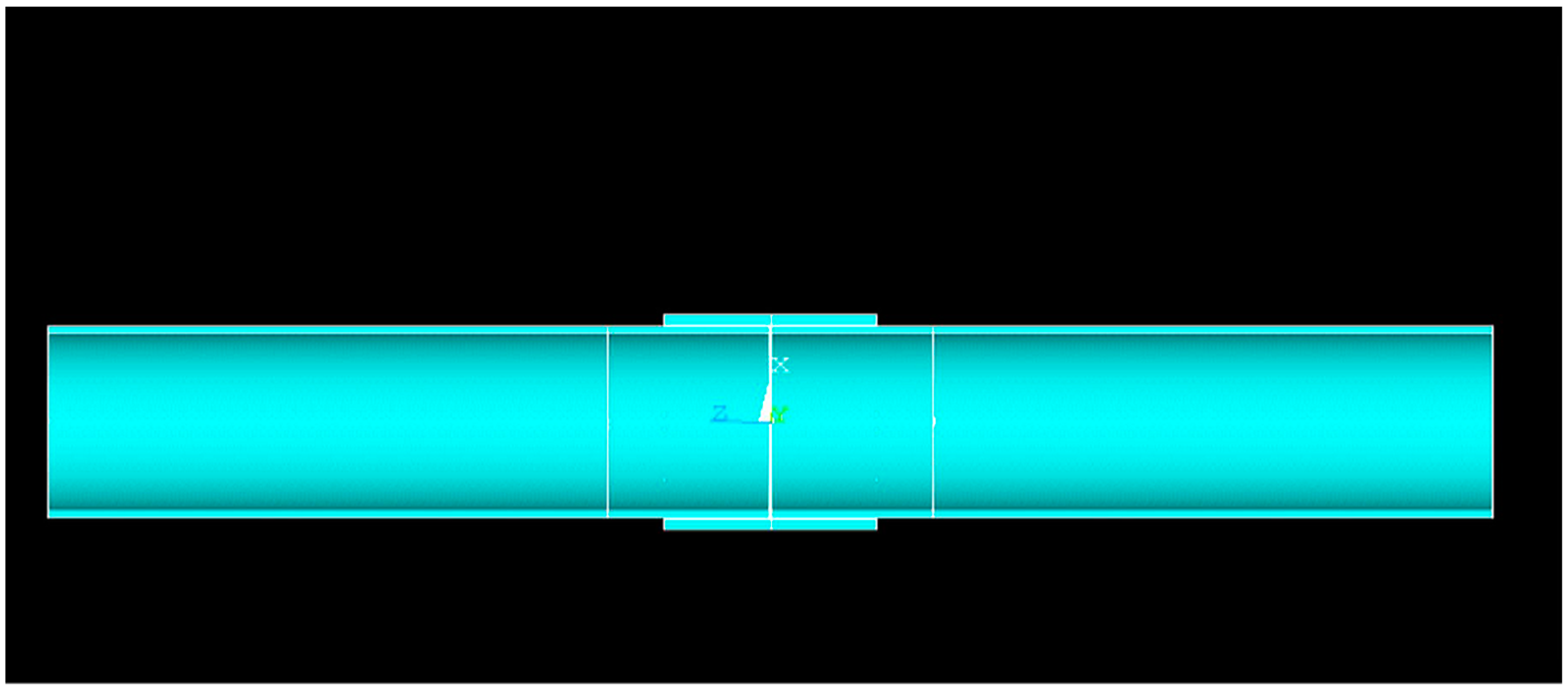
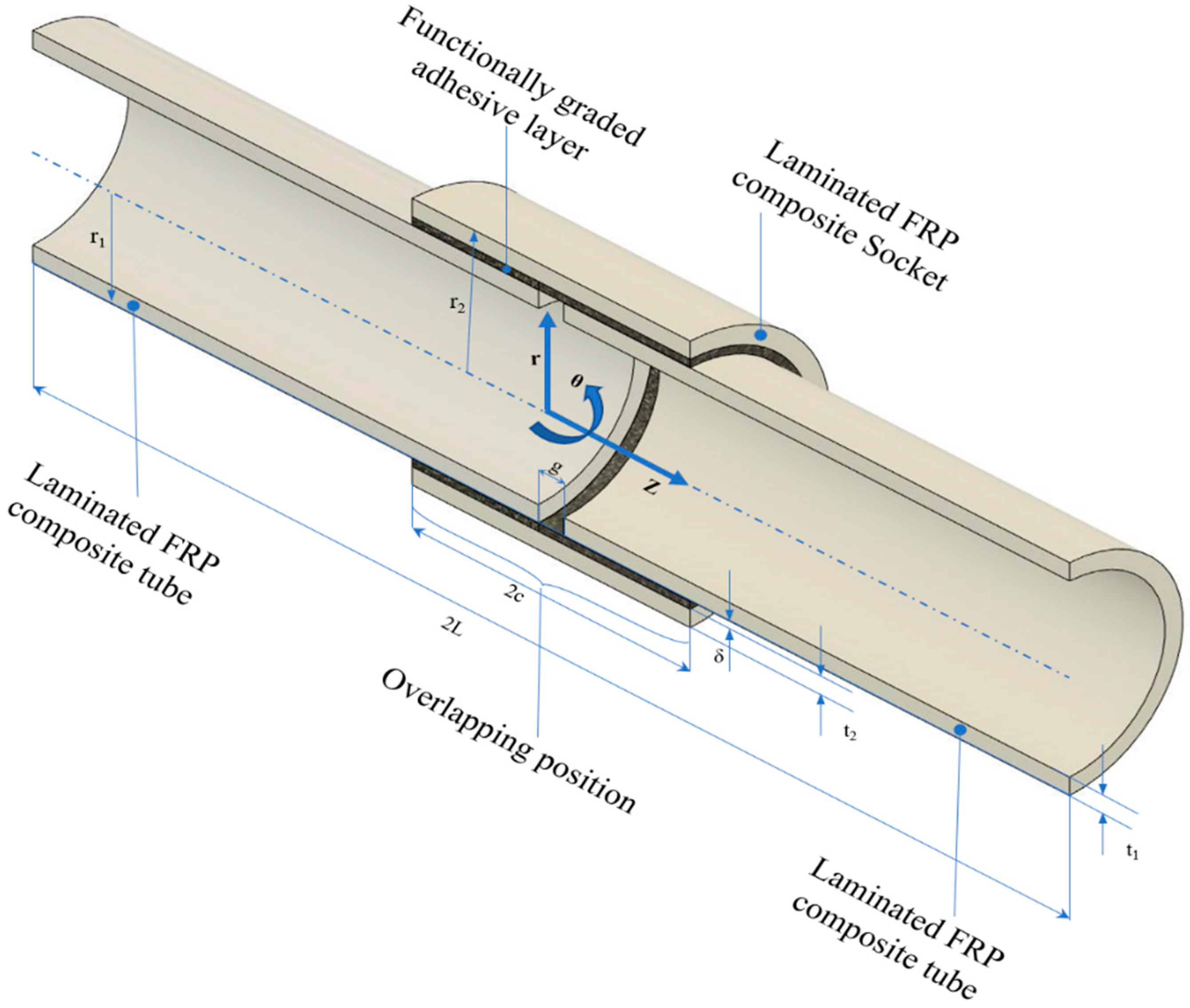
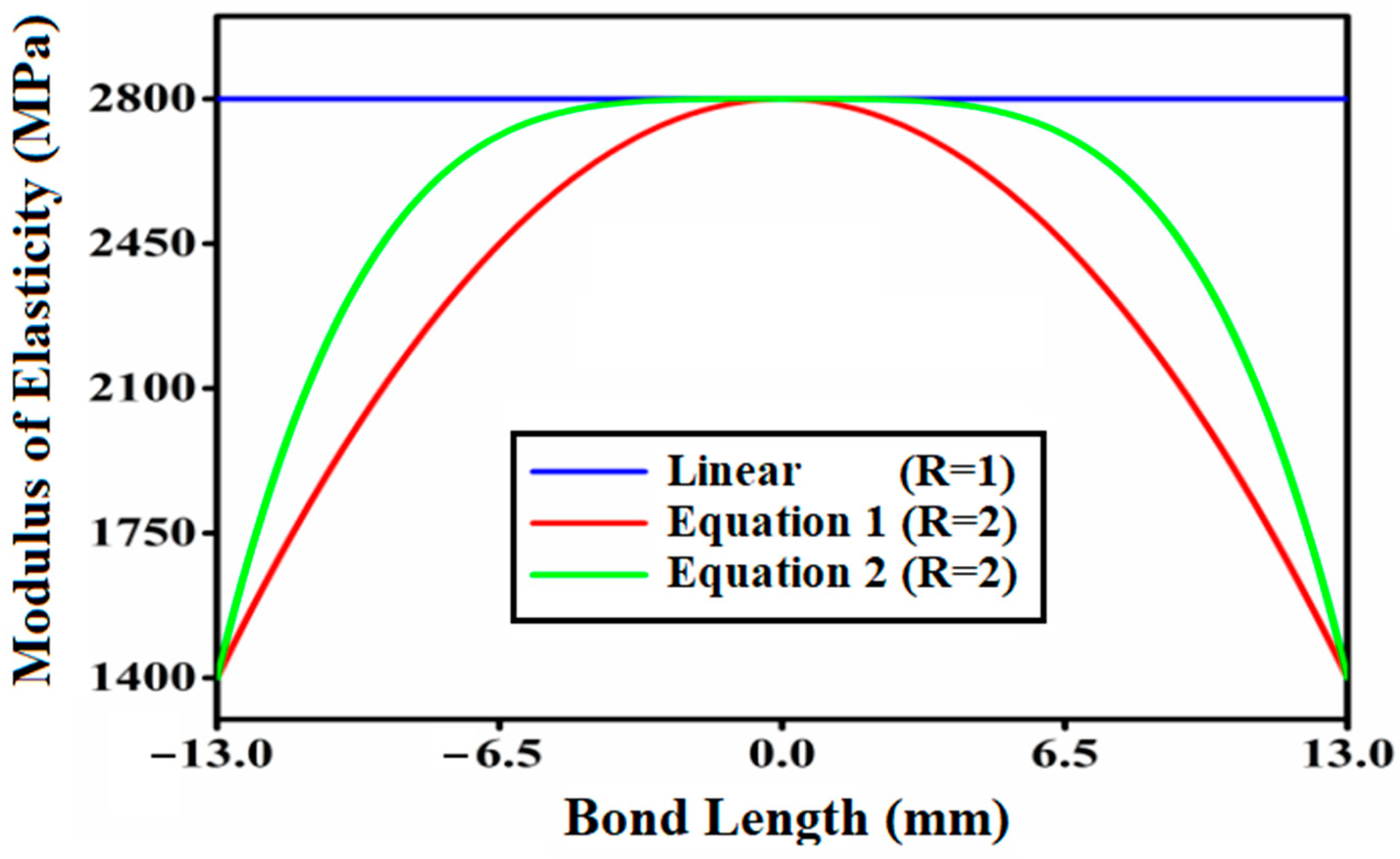

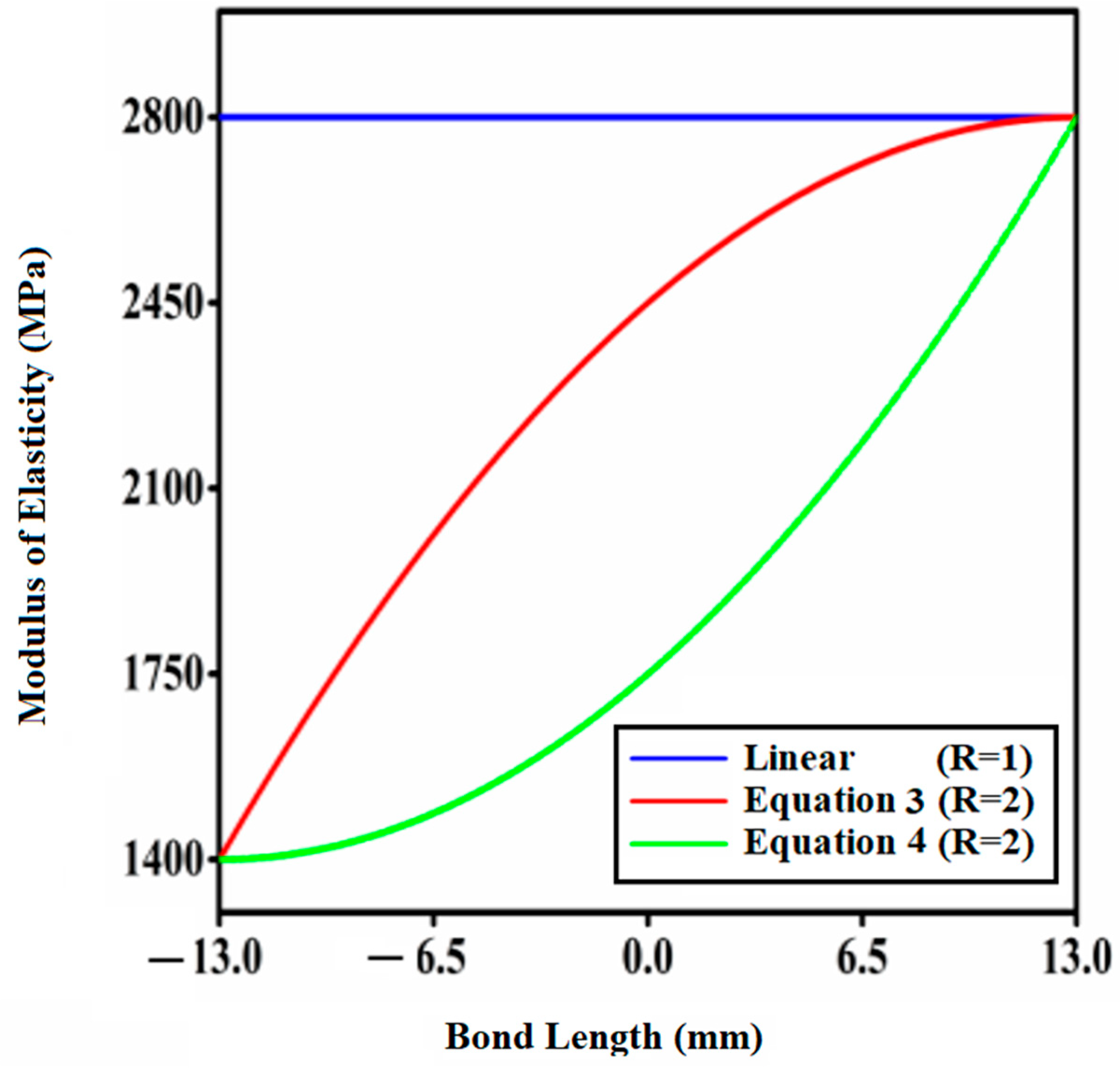
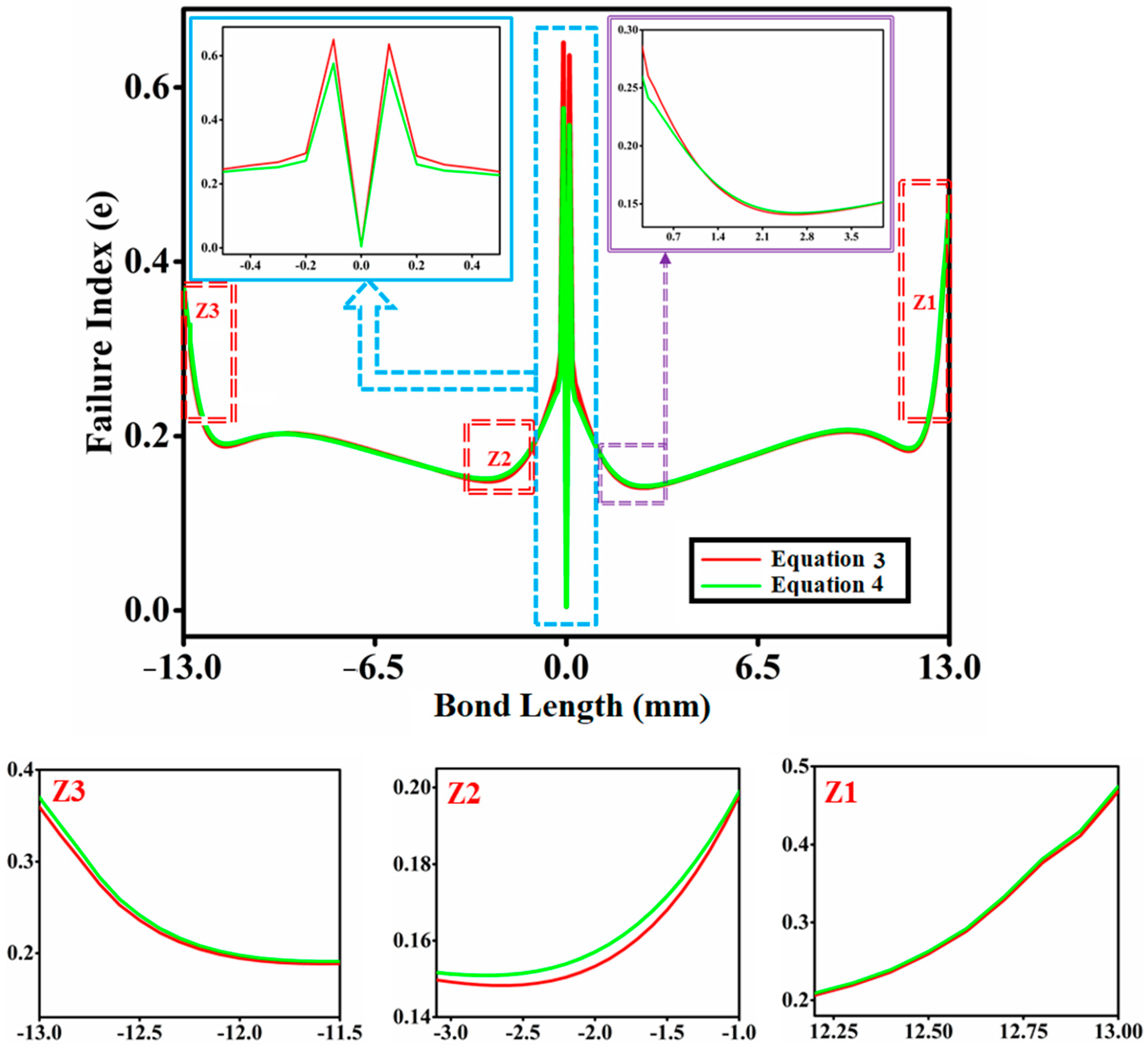

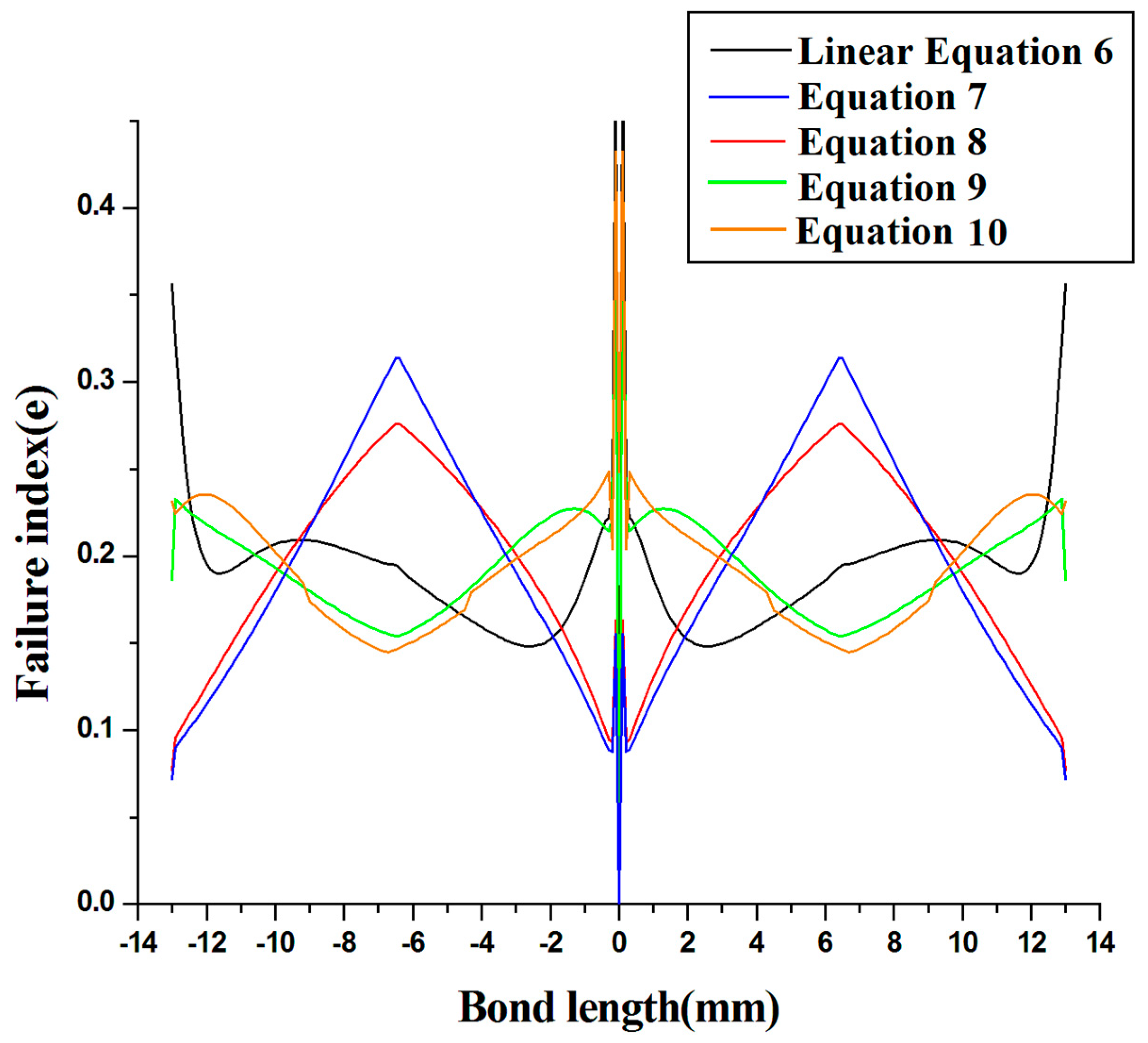
| Parameters of Tube and Socket | Gr/E-Coated FRP (T300/934) |
|---|---|
| Arrangement of plies | [0/90]S [33] |
| Thickness of the adhesives | δ = 0.1 mm [33] |
| The structure’s total length | 2L = 178 mm [34] |
| Tube’s outside dimension | r1 = 14.4 mm [34] |
| Socket’s outside radius | r2 = 16 mm [34] |
| Thickness of tube | t1 = 1 mm [34] |
| Thickness of the coupler | t2 = 1.5 mm [33] |
| Length of coupling | 2c = 26 mm [33] |
| Space among the tubes | g = 0.2 mm [33] |
| Material Characteristics | Values |
| Young modulus along axial E (z) axis | 127.50 GPa [34] |
| Young modulus along radial E (r) axis | 4.80 GPa [27] |
| Young modulus along radial E axis | 9.00 GPa [33] |
| Modulus of rigidity along two axis is Gzr = Gzθ | 4.80 GPa [33] |
| Modulus of rigidity along Gθr | 2.55 GPa [27] |
| Poisson’s ratio along two axis is µzr = µzθ | 0.28 [33] |
| Poisson’s ratio along two axis is µθr | 0.41 [33] |
| Strengths | Values |
| Transverse strength | 49 MPa [27] |
| Shear strength | 2.55 MPa [27] |
Publisher’s Note: MDPI stays neutral with regard to jurisdictional claims in published maps and institutional affiliations. |
© 2021 by the authors. Licensee MDPI, Basel, Switzerland. This article is an open access article distributed under the terms and conditions of the Creative Commons Attribution (CC BY) license (https://creativecommons.org/licenses/by/4.0/).
Share and Cite
Prakash, C.; Kumar, V.; Mistri, A.; Uppal, A.S.; Babbar, A.; Pathri, B.P.; Mago, J.; Sharma, A.; Singh, S.; Wu, L.Y.; et al. Investigation of Functionally Graded Adherents on Failure of Socket Joint of FRP Composite Tubes. Materials 2021, 14, 6365. https://doi.org/10.3390/ma14216365
Prakash C, Kumar V, Mistri A, Uppal AS, Babbar A, Pathri BP, Mago J, Sharma A, Singh S, Wu LY, et al. Investigation of Functionally Graded Adherents on Failure of Socket Joint of FRP Composite Tubes. Materials. 2021; 14(21):6365. https://doi.org/10.3390/ma14216365
Chicago/Turabian StylePrakash, Chander, Vidyapati Kumar, Ankita Mistri, Amrinder Singh Uppal, Atul Babbar, Bhargav Prajwal Pathri, Jonty Mago, Ankit Sharma, Sunpreet Singh, Linda Yongling Wu, and et al. 2021. "Investigation of Functionally Graded Adherents on Failure of Socket Joint of FRP Composite Tubes" Materials 14, no. 21: 6365. https://doi.org/10.3390/ma14216365
APA StylePrakash, C., Kumar, V., Mistri, A., Uppal, A. S., Babbar, A., Pathri, B. P., Mago, J., Sharma, A., Singh, S., Wu, L. Y., & Zheng, H. (2021). Investigation of Functionally Graded Adherents on Failure of Socket Joint of FRP Composite Tubes. Materials, 14(21), 6365. https://doi.org/10.3390/ma14216365













